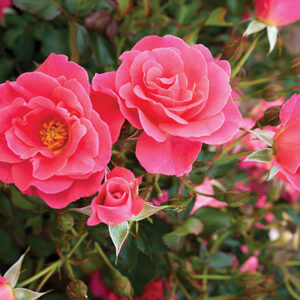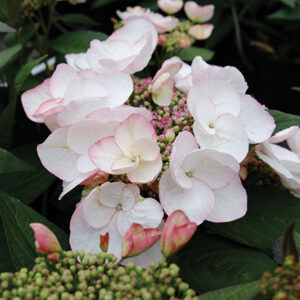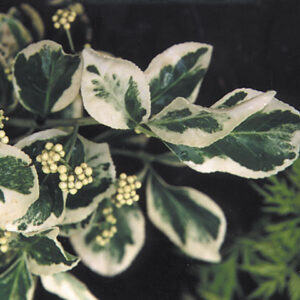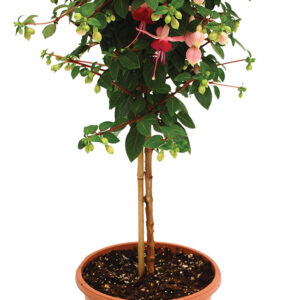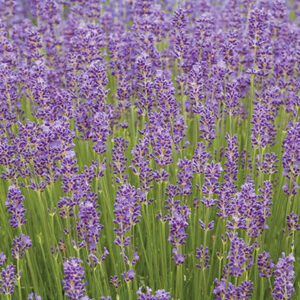
Features
Building on the pandemic gardening boom
How 2022 – The Year of the Garden – is playing out at garden centres across Canada, after two years of unprecedented demand for decorative and food-producing plants.
August 10, 2022 By Treena Hein
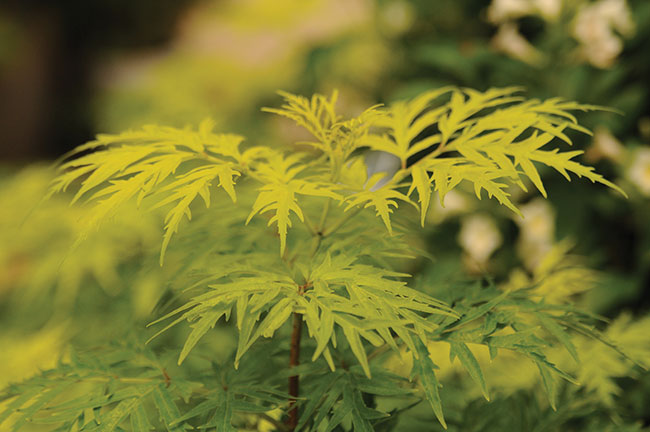
The 2020 season was a crazy one at garden centres in Canada and beyond. Due to spending so much time at home during the pandemic, people were keen to beautify their outdoor spaces but also wanted to try their hands at growing some fruit, veggies and herbs. The unprecedented demand for shrubs, trees, perennials, annuals and vegetable seedlings continued into 2021 – but how does the current level of demand in 2022 compare to the past two seasons?
In two words: very strong. Brian Minter, a landscaping writer and broadcaster in B.C., reports that in that province, in spite of a record cold, wet spring, most of the industry is humming along, albeit not at the pace of 2021.
“There’s still a strong presence of Millennials who are eager to learn and grow, especially about herbs and perennials,” he reports. “Participation of young males is growing, and they are great to work with. Boomers are still present but they’re spending less.”
Ben Cullen, who (along with his father Mark Cullen) is a well-known gardening industry author, notes that 2022 may be bolstered because it’s the official ”Year of the Garden” as declared by the Canadian Garden Council and recognized in the House of Commons this past March.
“Red is the official colour, which I am planting in celebration,” he says. “In keeping with the theme, we like Vineland’s Canadian Shield rose which is a deep red, repeat-blooming and low-maintenance landscape rose that is hardy virtually everywhere in Canada.”
Nature’s best
Although inclusion of native plants in Canadian flowerbeds has been a strong trend for years, Cullen says demand is now gaining steam. “Hardcore native plant gardeners are becoming more selective about plant varieties and origins, demanding local seed-sourced plant material wherever possible,” he notes.
At Sheridan Nurseries in Georgetown, Ont., native species, pollinator-friendly and low-maintenance plants are all trending.
“We had a number of guests looking for trilliums in the early spring and that demand for Ontario native varieties has continued into early summer with guests looking for Soloman’s Seal, Perennial Geranium and Native Grasses,” reports Sheridan’s director of marketing Victoria Mulvale.
Jon Peter, curator at Royal Botanical Gardens in Burlington, Ont., agrees that native species and nativars (cultivars of native species) are gaining in popularity. He says that Baptisia, Asclepias, Eutrochium, Pycnanthemum and Monarda are all great for pollinators and drought-tolerant as well. Peter adds that “sedges (Carex sp.) are also getting hot and being produced in greater quantities. There are many variegated forms of Eurasian sedges that have been popular in the past, but I see the trend of using sedges in the landscape moving more towards the plethora of sedges native to North America. These adaptable species also provide significant ecosystem benefits.”
He adds that the Perennial Plant Association’s “2022 Perennial Plant of the Year” is native to many parts of North America: Little Bluestem (Schizachyrium scoparium). He describes it as “a tough and dependable clumping grass that plays well with other perennials” and also serves as a larval host for a variety of butterflies and moths such as crossline skipper, Dakota skipper and Ottoe skipper. Cullen agrees that this plant’s clumps integrate well in flowering perennial beds, providing blue foliage in summer and copper-red into the fall.
Overall colour trends
Neons are really hot right now, says Felicia Vandervelde, regional account manager for Canada and product development manager at PanAmerican Seed.
“Anything vibrant and tropical that would catch your eye, like magentas, hot pinks, shimmery purples,” she says. “We call this ‘drive-by colour.’ Several of our new introductions have this effect, like our Solarscape Interspecific Impatiens in Magenta Bliss, or the Jolt Dianthus in Purple. They are versatile and durable plants that can handle all kinds of light exposures.”
Peter notes that hot yellow, orange and reds are being combined with softer pastels in blues, pinks and purples. And for multiple colours on one plant, gardeners are interested in new cultivars of perennials of the genus Amsonia which have white, silver and light blue flowers or yellow-gold-orange hues with stem colours in purple/black. Examples include Amsonia tabernaemontana ‘Storm Cloud’ and Amsonia ‘Butterscotch.’
At Sheridan Nurseries, however, white is the most popular colour in annuals this year. “It pairs so nicely with green for a clean, fresh landscape,” says Mulvale. “Lots of demand specifically for white geraniums, Mandeville and New Guinea impatiens. White is followed by purple, blue and pale pink. Green in general is also trendy with an increased demand for foliage annuals.”
Minter has also noted that foliage in annuals is very important among 2022’s garden centre shoppers. “There’s been a huge upswing,” he says, “particularly in coleus, focal points and spillers.”
Perennials and shrubs
Gardeners continue to love perennials more than ever, with the continuing new introductions of new colours and patterns, longer-lasting blooms and greater hardiness.
“In terms of multi-function plants that smell and look great,” says Mulvale, “lavender has been gaining in popularity over the past few years. As fast as we can bring it in from our farms it is selling right off the racks before it hits the benches. Guests seem to associate lavender with better living.”
Sheridan customers are also requesting shade-tolerant perennials this year, specifically vines, but also want roses and Hydrangeas. The company now offers a new Hydrangea called Game Changer, a vigorous grower that stands up well to tough weather and has big, bold blooms from spring to fall.
Peter is also seeing Hostas regaining popularity.
“This may be due to the new forms being introduced from giants to miniatures and also more recent hybridization efforts have introduced Hosta with hints of red/purple in the stems and into the leaves, adding a whole new colour palette for shade gardens. Here at Royal Botanical Gardens, we’ve recently added red forms like Hosta ‘Cherry Berry’ and ‘Raspberry Sundae’ to our collection,” he explains.
Minter also reports that Hosta sales are strong in B.C. In fact, the strongest he’s ever seen. He and his colleagues are also seeing a love affair between customers and old-fashioned plants like foxgloves.
However, he adds that, “ever since late last summer, there has been a significant drop in all tropical sales. Prices of rare and unusual tropicals are dropping dramatically.”
But tropical plants remain very popular at Sheridan’s locations, especially Bird of paradise, fuscia standards, hibiscus standards and bromeliads.
On the shrubs front, Peter notes that as many people are gardening in small spaces, there is demand for dwarf and fastigiate forms.
“An amazing array of dwarf conifers are available which can be easily grown in containers on a patio or balcony,” he says, “and will provide interest year round.”
Cedars, especially hedging cedars, are also popular. “Euonymus, specifically the Emerald Gaiety euonymus,” says Mulvale, “is a fast-growing and dense evergreen with leaves that are green with white edges and can take on a pink tinge from November to April, which speaks to the trend of interesting foliage. Tall, narrow columnar beech and oak trees are also popular for smaller yards. Also anything with a bit of leaf colour is being requested more. Lime or black Elderberry and variegated Weigela are examples here.”
Vegetable vibe
Cullen notes that after many new gardeners have tried food gardening over the last two years of the pandemic, it’s now becoming more sophisticated with gardeners getting into seed saving, raised beds, and organic practices.
Mulvale agrees that the grow-your-own food movement remains strong, but this year is dominated by fruit, especially berry bushes, grapes, rhubarb – and ‘fruit salad trees’ which have a variety of four fruits on one tree.
Peter sees many gardeners incorporating plants like parsley, dwarf tomatoes, peppers, eggplants, herbs, and others into their ornamental container plantings or mixed within perennial garden beds. “Some are even devoting all of their space in containers to producing fresh veggies or experimenting with growing these crops vertically in their spaces,” he says.
Indeed, to help those people who need to grow food in small spaces or even indoors, PanAmerican Seed recently released a full line of compact vegetables called Kitchen Minis that can be grown and finished in a 4 to 8-inch pot. “This means the consumer can buy them already finished and harvest off the plants for four to six weeks,” says Vandervelde. “Key varieties are Tomato Siam, Tomato Red Velvet, Sweet Pepper Fresh Bites, Hot Pepper Burrito and Hot Pepper Taquito.” She adds that “trending now are unique vegetables like striped sweet peppers (Candy Cane Chocolate Cherry and Candy Cane Red), unique-looking hot peppers (Mad Hatter) and last but not least, the new Tomato Sun Dipper that has an oblong shape perfect for dipping in ranch and crudité sauces.”
On the herb front, PanAmerican Seed recently released a new Genovese Basil called Everleaf Emerald Towers, which is a columnar basil that flowers 10 to 12 weeks later than typical basil.
“This means gardeners can have a three-season basil rather than having to replace it after it blooms and goes bitter,” says Vandervelde. “We also just released Everleaf Thai Towers, which also blooms later than standard Thai basil and is great in so many Asian dishes. Both of these basils can serve double duty as they perform great in mixed containers along with sun-loving annual flowers. They add the upright component to patio pots or even garden beds.”
Print this page
